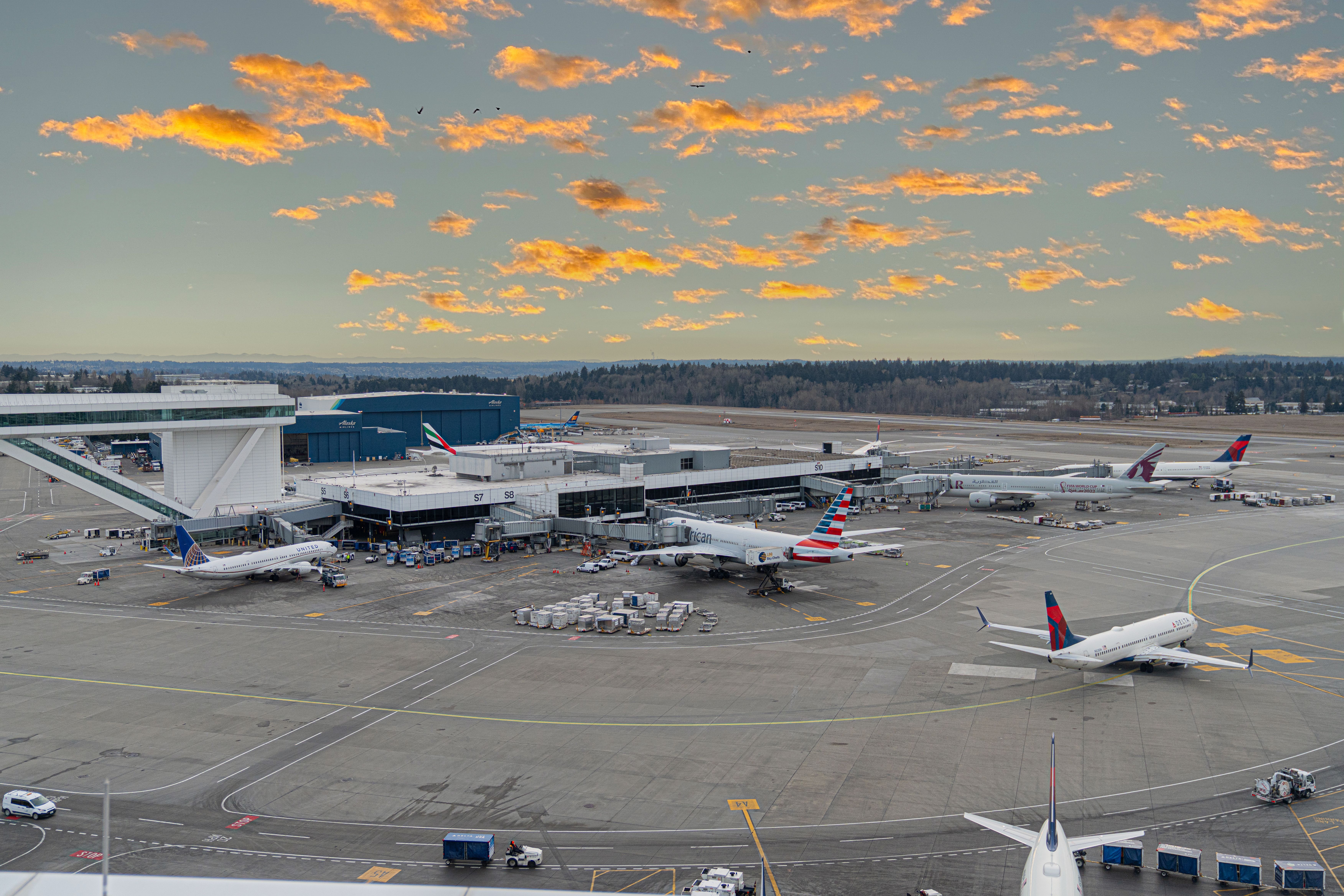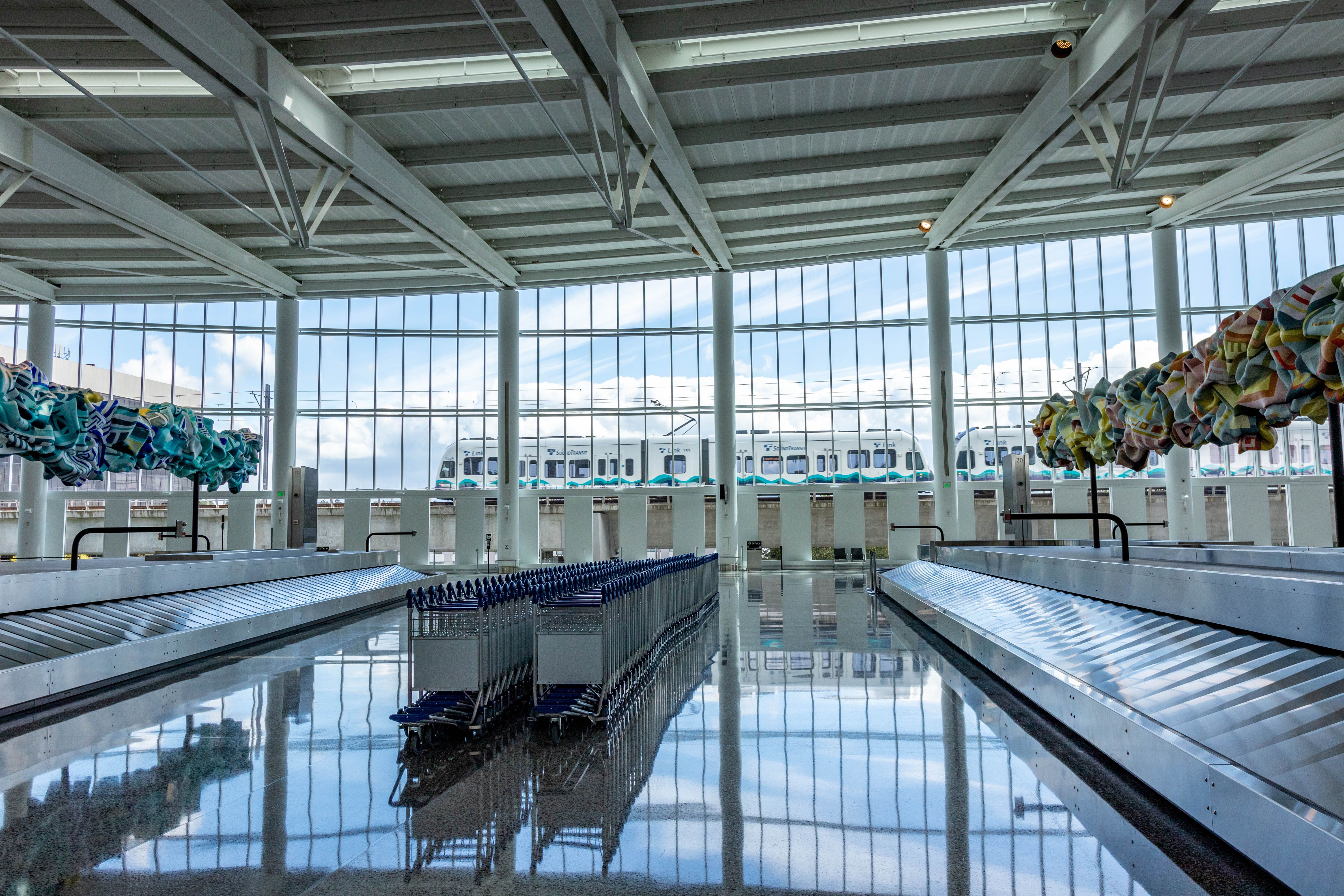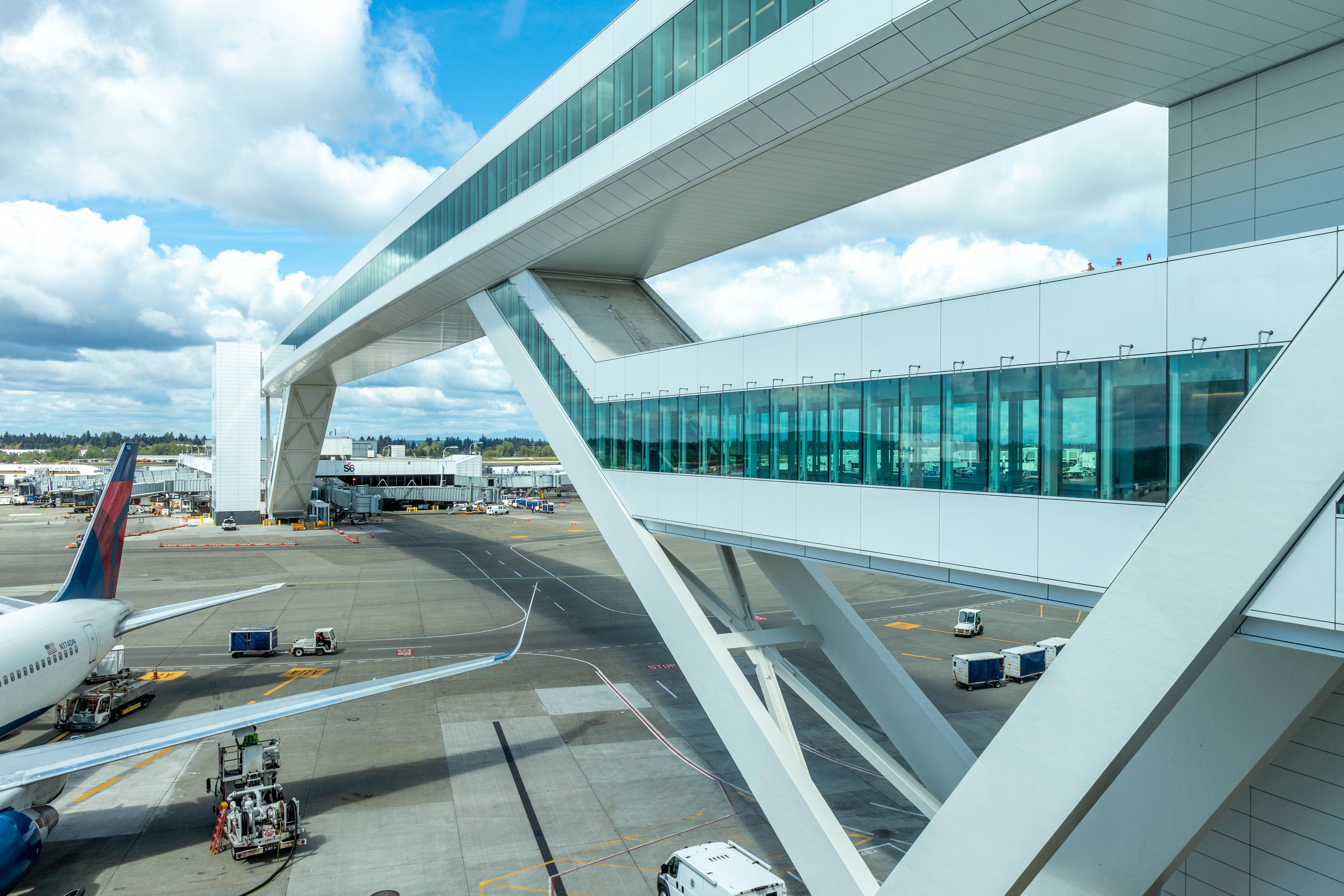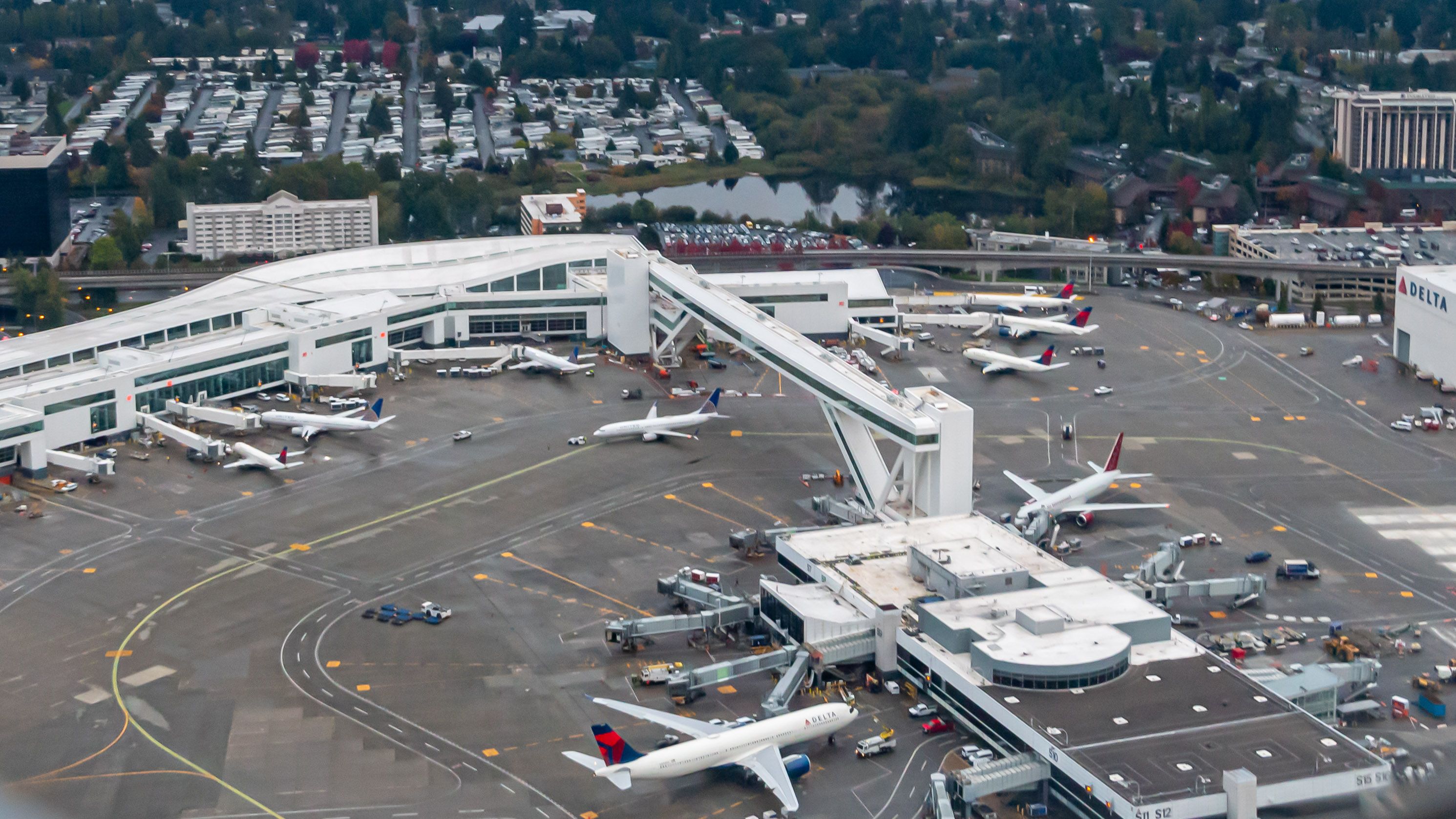Last week I flew to Seattle to attend Boeing's event for the delivery of the final 747 to Atlas Air. On arrival at Seattle-Tacoma International Airport, I met with the airport's media relations teams to tour the airport and take a firsthand look at recent and future airport improvement projects. This article only discusses the new International Arrivals Facility.
SeaTac has numerous ongoing projects; stay tuned for more on what is happening there.
International Arrivals Facility
SeaTac's new International Arrivals Facility, completed in spring 2022, is a new pride and joy for the airport. The new IAF has drastically improved the international passenger experience, from new baggage claims to new walkways. In the airport's 71-year history, there has not been a more complex capital development project.
Located east of Concourse A, the IAF features a new 450,000-square-foot grand hall for baggage claim and luggage processing and a 780-foot-long aerial walkway suspended 85 feet in the air over an active taxiway. The walkway connects passengers from the South Satellite concourse to the grand hall (IAF) and a new international arrival corridor for international flights arriving at concourse A.
SEA is one of the first American airports to participate in the United States Customs and Border Protection (CBP) Bags First program, in which passengers grab their luggage before seeing immigration officers and officially entering the country. San Diego International Airport was the first to trial the program in 2018, followed by SEA, the first 'large hub' airport to trial. Orlando International Airport became part of Bags First last fall.
Through the new IAF facilities, SEA was able to nearly double the number of gates capable of receiving international flights (12-20), more than double the passenger capacity per hour to 2,600. Three new luggage carousels were added, the minimum connection time was reduced from 90 to 75 minutes, and introduced new technologies to improve passport checks. When the IAF was first designed, a space was set apart for immigration kiosks, but because the airport moved to the baggage first model, that space is no longer in use.
New gate pods at the A concourse of SEA allow the airport to alternate some gates between domestic and international arrivals by closing access to the terminal and directing passengers through a corridor that leads to the Customs and Border Protection checkpoint in the IAF.
New aerial walkway
The aerial walkway was built off-site in a corner of the airport. Once the center section of the walkway was completed, it was driven over to where it was installed next to the S concourse. Four remote-controlled transporters were used to move the 1,565-ton center span to install the walkway. A similar construction method was used at Dallas-Fort Worth International Airport for the new High-C gates completed last summer.
Passengers exiting the gates at the S concourse are met by one of the ten longest escalators in the United States, which can be used to access the top walkway. Getting from the bottom to the top of the escalators takes just under two minutes.
Get the latest aviation news straight to your inbox: Sign up for our newsletters today.
Below are a few interesting facts about the aerial walkway:
- World's longest structure over an active taxiway
- Longest clear span structure at an airport
- 115-foot cores
- Concrete piles reaching depths of 65-90 feet
Have you been to SEA's new IAF? Let us know in the comments below.




